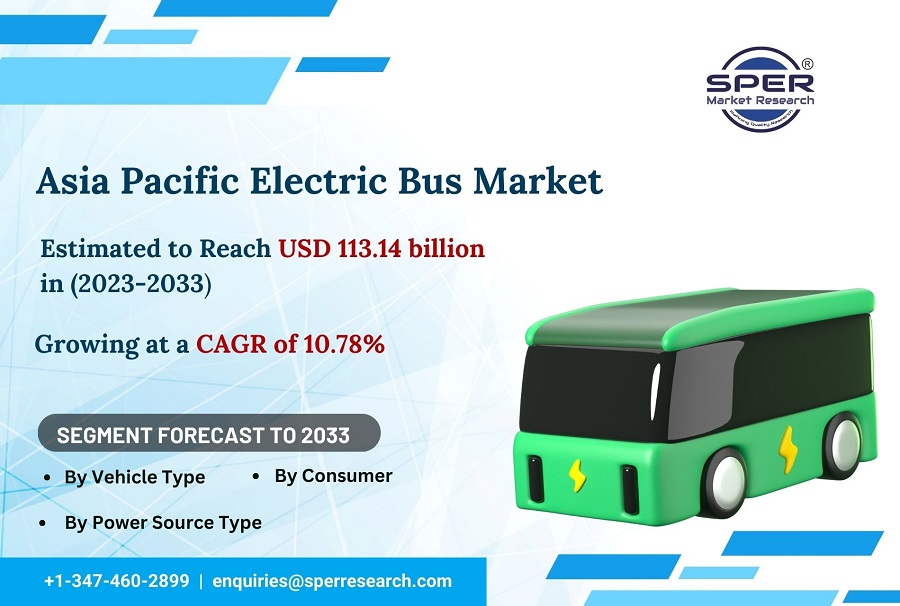Asia Pacific Electric Bus Market Share, Growth Opportunities, Emerging Trends, Key Manufacturers, Future Challenges and Forecast 2023- 2033: SPER Market Research

A form of public transportation vehicle known as an electric bus uses electricity as its fuel rather than fossil fuels like petrol or diesel. These buses are propelled by an electric engine that is fuelled by enormous batteries that store electrical energy. Electric buses are regarded as a cleaner and more environmentally friendly mode of transportation than their conventional counterparts because they do not rely on conventional fuel sources. Additionally, compared to diesel buses, electric buses are frequently quieter, which can lessen noise pollution in urban areas. Governments and transport agencies around the world are trying to minimise their carbon footprint and improve air quality, which is why electric buses are growing in popularity in many places.
According to SPER market research, ‘Asia Pacific Electric Bus Market Size- By Vehicle Type, By Power Source Type, By Consumer- Regional Outlook, Competitive Strategies and Segment Forecast to 2033’ state that the Asia Pacific Electric Bus Market is predicted to reach USD 113.14 billion by 2033 with a CAGR of 10.78%.
The Asia-Pacific region will experience rapid urbanisation, rising environmental concerns, mandatory emission and fuel economy standards, increasing government initiatives in the form of subsidies and rebates, rising use of electric vehicles, and the replacement of heavy-duty diesel and gasoline-run buses with zero-emission buses, all of which will hasten the growth of the electric bus market. The Asia-Pacific electric bus market will also have growth prospects due to the increasing need for electrification of mass transit, technological advancements with creative transportation sector initiatives, and government banking.
However, the electric bus market will be adversely affected by changes in government incentives and legislation. For instance, the Chinese government said that it would stop funding electric buses by 2020, which could raise the price of electric buses there. Furthermore, the development of electric buses in growing nations like India is being held back by rising expenses associated with them, costly infrastructure development expenditures, and the installation of charging stations.
Request For Free Sample Report @ https://www.sperresearch.com/report-store/asia-pacific-electric-bus-market.aspx?sample=1
Furthermore, due to a serious shortage of raw materials and other electric components, the COVID-19 epidemic has had a negative effect on electric buses in the Asia-Pacific area. The Asia-Pacific region’s market for electric buses is expected to rebound during the projected period, though, as temporary restrictions on travel and cargo have been lifted by local governments. As a result, the desired components for the manufacture of electric buses can now be transported.
Geographically, China makes up the greatest portion of the market for electric buses in the Asia-Pacific region. Additionally, some of the market key players are Anhui Ankai Automobile Industries Co. Limited, Ashok Leyland Limited, BYD Auto Co. Limited, Others.
For More Information, refer to below link:-
Asia Pacific Electric Bus Market Future Outlook
Related Reports:
Follow Us –
LinkedIn | Instagram | Facebook | Twitter
Contact Us:
Sara Lopes, Business Consultant – U.S.A.
SPER Market Research
+1-347-460-2899





